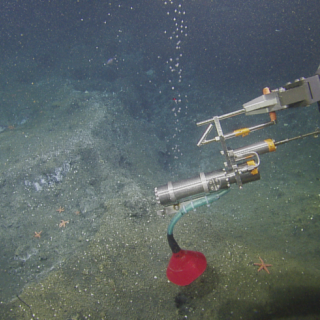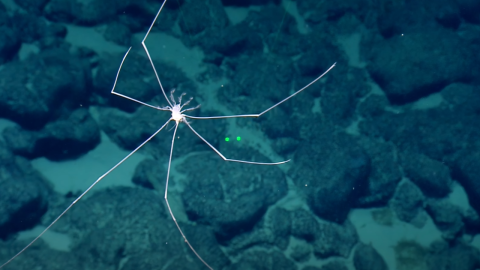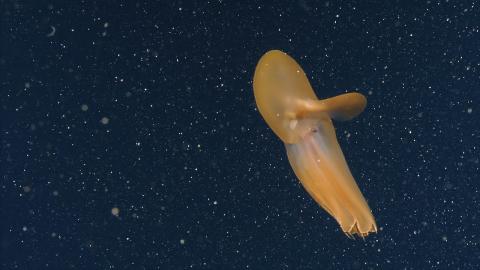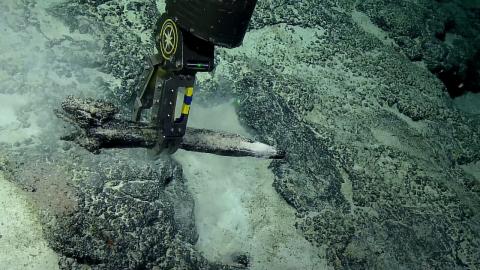Sampling Methane Seeps of Carbonate Ridge
In recent years, E/V Nautilus and other vessel’s multibeam sonar surveys have located over 3,500 previously unknown methane seeps rising along the Cascadia Margin at depths between 200 and 3,200 meters.
But what causes these bubbling streams to escape the seafloor and enter the water column?
Fifty percent or more of the global organic matter that reaches the seafloor is thought to do so along the continental margins, one of which is the geologically active Cascadia Margin located along the coasts of Washington, Oregon, and northern California. Active seeps form along this boundary where organic matter decomposition eventually generates methane through microbial and thermal processes. As methane enters the water column, a fraction dissolves into the seawater and eventually oxidizes to carbon dioxide while the remainder rises in the form of gas bubbles.
And if the seeps are in shallow waters, the rising bubbles can eventually reach the uppermost water column and may enter the atmosphere. In fact, recent discoveries show that the storage and release of methane on the submerged U.S. continental margin is more widespread than previously realized, suggesting that the role of methane seeps in the carbon cycle and in marine ecosystems is clearly underestimated.
For two weeks in 2021, scientists aboard E/V Nautilus explored seep ecosystems and sampled with gas-tight bottles to collect gas to study the chemical makeup of bubble streams. This sample was located at Carbonate Ridge at a depth of 571 meters.
“We’re looking at methane in these bubble streams and we're trying to get a handle on how much methane is actually in the water column out here,” said Susan Merle, a senior research assistant at NOAA's Pacific Marine and Environmental Lab and Oregon State University’s Cooperative Institute for Marine Resources Studies.
Samples collected by our team and detailed mapping will help to better characterize this geologically active region, painting an underwater picture of how this deep-sea environment might impact life around the planet.

Cascadia Margin Seep Exploration
For two weeks, E/V Nautilus will return to the Cascadia Margin, a geologically active region located offshore of Washington, Oregon, and northern California, where we have mapped and explored many methane seeps and cold seeps.



